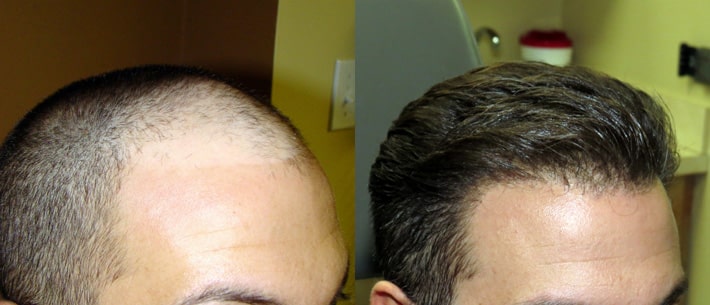
Follicular Unit Extraction (FUE), also popularly known as Follicular Transfer (FT) is one of the primary methods of obtaining, or “harvesting” naturally occurring donor hair follicle units (one to four), which are the basic building blocks for a follicular unit hair transplantation procedure.
In 1998, Janpan’s Masumi Inaba, was the first one to introduce the use of an instrument that is a one-mm needle for the extraction of hair follicular units. To master the art of extraction, considerable time and standardized learning skills are required.
How FUE Hair Transplant Procedure is performed?
To provide a natural appearance of hair, the FUE Hair Transplant follows a unique procedure that requires the separation of a follicular unit from its surrounding tissues by the use of an instrument via small, skin circular incisions around the follicular unit. A micro scar is then utilized to pull this specific unit directly from the scalp. And finally, the follicle extracted, is then neatly transplanted into the recipient’s designated area. This procedure requires a minimal time period and is quite simplified without any major complications. Moreover, no suturing (stitches) or large deep cuts are incorporated to achieve a successful result, hence minimizing the pain threshold. Due to these reasons, the procedure is considered to be minimally invasive and provides a significantly reduced recovery time, allowing patients to return to their normal routine much faster as compared to the conventional Strip-Harvesting surgery process. In case, your scalp is too tight for extraction, a surgeon can always use the hair from your nape as an alternative.
The foundation of the FUE procedure relies solely upon the survival of the follicular units which are successfully extracted from the scalp. There is a high chance for the hair transplant to result in a failure if the follicular units are transected during the extraction process, which means that the graft might not be able to survive the transplant rendering it into a useless one.
Pros and Cons of FUE Hair Transplant
FUE transplant results can beneficial in a number of ways, since it leaves no linear scars you can always wear your hair short eliminating the fear of self-consciousness. In addition, it reduces the risk of long term nerve damage that can lead to chronic numbness or pain in the donor area. You can do this alone without an attendant, in fact even easily drive yourself home, as the procedure is performed under local anesthesia, lowering the post-operative discomfort; subsequently, you do not have to miss out on your work or other errands as it permits fewer restrictions on post treatment activities. Lastly, it is your own real, natural hair.
Although, harvesting grafts can cause “pit” scarring (small, round white scars) in the patient’s donor area where the grafts have been removed. Any borderline harvesting can result in loss of transplanted hair as the donor region might not be “permanent.” Scarring or distortion can make the drafting more difficult and fragile which can be subjected to trauma during the process of placing, this is so as they often lack in a protective layer of dermis and fat of a microscopically dissected graft
It is important for you to consult with a professional doctor before you opt for a FUE hair transplant for its assessment; subsequently, after FUE hair transplant just follow these few mentioned tips to focus on post-surgical care:
Day 1: Don’t touch, rub or wash the surgical area, cover your head and elevate your head upon sleeping.
Day 2 – Day 4: Avoid sunburn, scratching or rubbing.
Day 5 – Day 7: Use a shampoo to make the scab softer.
Week 2 – Week 4: Resting phase will result in hair shaft loss, don’t panic and continue using shampoo.
Month 2 –Month 3: Follow up with a doctor to minimize shock loss.
Month 4 – Month 6: Use a strong sun block SPF 30 in the Sun.
Month 6 – Month 12: Style the baby hair that appear.
Month 12 – Month 18: Enjoy your new hair!
Below are some of the successful FUE hair transplant results pictures.

Fig 1. Before and after appearance of a successful FUE hair transplant

Fig 2. A FUE hair transplant before and after comparison, with around 2500 follicular units grafts.
In recent years, FUE hair transplant surgery has become a top priority of choice for people who are keen to restore their natural hair, especially because it results in better positive outcomes.
Also ReadHere’s how you can find a Hair Specialist Doctor in Karachi Equipped with Latest Hair Transplant Knowledge

Crafting words to inspire, engage and motivate. 10+ years of content writing, SEO, digital marketing and blogging experience. Ready to help your brand reach its potential!

